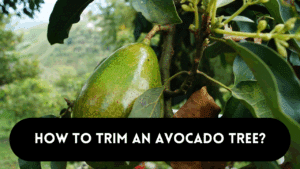Have you ever looked upon a scene where a majestic tree used to stand, only to discover that it is no longer there, leaving an empty space that defies explanation? Can you plant a tree where one was removed? is a topic that frequently arises in situations like this.
This is an important question in the field of environmental management. Trees are more than just passive bystanders in our environment; they are vital organs that give innumerable species oxygen, cover, and a safe refuge. The story of whether or not we can replace a felled tree with a new one is one of science, willpower, and a little bit of green magic.
The Restoration Craft To Plant a Tree Where One Was Removed
Examining the circumstances left by the deceased tree is the first stage in this arboreal trip. As a skilled painter, nature may leave a variety of chances and difficulties on its canvases. It’s important to know the nuances of the landscape before getting your hands dirty with a fresh seedling.
Knowledge of the Ecosystem
Natural systems function in intricate balances, which can be upset by the removal of a tree. The environment that surrounds the empty space changes, impacting everything from the sunshine availability to the makeup of the soil. Understanding these changes will help us adjust our strategy such that the new tree not only survives but flourishes.
The Green Orchestra
Consider planting a tree to be similar to arranging a symphony. Every component is essential, and timing is everything. Start by taking a close look at the dirt. Is it densely packed, devoid of nutrients, or brimming with life? Equipped with this understanding, select a type of tree that complements the properties of the soil.
Selecting the Proper Species
You need to choose a tree species that blends in with the surroundings, much like a conductor chooses the ideal instruments for a symphony. Take into account elements like the kind of soil, climate, and accessible space. Native species frequently blend in perfectly, growing to be an organic part of the environment.
Plant a Tree Where One Was Removed
The seasons add a new verse to a tree’s life cycle as they follow a rhythmic dance in nature. Timing is critical when thinking about planting. The best season is frequently spring, with its moderate temperatures and plentiful precipitation. This gives the young sapling the perfect environment for root development and early growth.
The Seasons’ Symmetry
Align your steps with the rhythm of the natural world as you set out on your quest. The best seasons to plant are in the spring or autumn, when the tree can get acclimated before summer or winter’s severity comes in. The driving theme for a fruitful tree-planting symphony is nature’s rhythm.
The Planting Ritual
Planting a tree is a spiritual ceremony that strengthens our connection to the land, not just a routine chore. Imagine yourself in the role of a guardian, responsible for a young person’s wellbeing. It takes more than just digging a hole; the procedure also entails establishing a supportive atmosphere that encourages development.
Reaching Deep for Achievement
Although it may appear simple, digging a hole is essential to the tree’s destiny. Make sure the opening is sufficiently large to allow the roots to grow freely. Planting trees too deeply is a typical error; they should be planted at the same depth as they were in their nursery container.
ties between roots and soil
Consider the tree’s arrival in its new location as a get-together of long-time friends. A subtle dance between the roots and the earth creates a link that keeps the tree alive. In order to provide stability and the best possible contact between roots and soil, pack the dirt down tightly to remove any air spaces.
Mulch: The Natural Cover Up That Tree where One was removed
Think of mulch as a weatherproof covering that keeps the tree safe from severe conditions. To stop decay, spread a thick coating around the base, allowing room close to the trunk. Mulch holds onto moisture, keeps weeds out of the garden, and as it breaks down, gradually improves the soil.
The Care Symphony
There’s more to being a tree carer than just planting a tree. As with any masterful performance, the symphony of care demands commitment, focus, and a deep comprehension of the requirements of the tree. The constant movements in this arboreal composition become watering, trimming, and insect control.
Harmony of Hydration
The essence of life is water, and young trees are especially in need of it. Create a watering schedule and follow it to keep the soil evenly damp but not soggy. By encouraging the roots to penetrate the soil, deep watering builds a strong foundation for the tree.
The Partial Reduction
Pruning shapes a tree’s shape and encourages healthy development, much like a delicate dance. Carefully cut off any unhealthy or dead branches so the tree may focus its energy on healthy, new growth. Additionally, pruning improves air circulation, which lowers the chance of illness.
Protection Against Insects
Pests are the rowdy guests who pose a threat to the harmony in the magnificent symphony of nature. The barriers that safeguard your tree from potential injury include proactive actions like using organic insecticides and routine inspections.
A Woodland of Opportunities
As your newly planted tree grows and matures, picture the day when the once-empty area becomes a vibrant ecosystem. As a focal point, the tree draws in birds, insects, and other plants. The story moves from absence to plenty and from loss to regeneration.
Variety Within Oneness
Your recently planted tree adds to the diversity that nature cherishes in life. Promote the development of companion plants to create a microcosm in which all the elements are balanced. This variety promotes a robust and self-sustaining environment in addition to improving the visual appeal.
Past the Canopy: An Emerging Legacy
Planting a tree in its place that was taken down goes beyond the nearby terrain. It is a legacy that is being revealed with every passing season and a promise to future generations. As the tree becomes older, it starts to record time and serves as a living example of the unbreakable connection that exists between people and the natural world.
A timeless relationship
Planting a tree is a time-honored way to stay connected to the planet in our fast-paced, technologically advanced era. It is reminiscent of the ancient civilizations’ appreciation of trees as life-giving, wise, and enduring symbols. Your tree takes on the role of a storyteller, telling tales of development, resiliency, and life’s cycles.
Obstacles and Achievements
There are obstacles to overcome while planting a tree in its place after one was taken down. Due to its unpredictable nature, nature could place barriers in your way. Nevertheless, every obstacle presents a possibility for success and for strengthening your bond with the natural world.
Getting Through the Storms
You have to persevere through the difficulties you confront, just like a tree does when it is stormy. Changing your routine of care to accommodate sudden frosts or protracted droughts will assure the tree’s resilience. Think of it as a collaboration with nature, where adaptability is essential for success.
FAQs
Is it possible to plant a tree where one was taken down?
Definitely! Replanting in the same location is not only feasible but also very advantageous. For optimal results, make sure the soil is well prepared and select a tree species that is suitable with the surrounding area.
After a tree has been removed, what is the ideal time to grow another one?
The best times to plant are in the spring and autumn. Before the harshness of summer or winter sets in, these times offer the young tree the best chance to grow its roots.
How should a recently planted tree be maintained?
It’s crucial to provide enough water, prune properly, and keep pests out. Mulch to provide a loving atmosphere, and keep up a regular care schedule to encourage the tree’s healthy growth.
Is it okay to plant any kind of tree in the empty space, or are there other things to keep in mind?
When selecting a tree species, take the local climate, soil composition, and available space into account. It is common for native species to blend in perfectly with the ecology, creating a more sustainable and healthy habitat.
What difficulties may I have when planting a tree in its place that was taken down?
Obstacles including unforeseen temperature swings, vermin, and unfavorable soil attributes might appear. Changing your maintenance regimen and being watchful for any problems will help you overcome these challenges.
Conclusion
In the symphony of life, where trees are the musical notes that thread through the centuries, the issue of whether you can plant a tree where one was removed is not simply a query but a call to action. It’s a confirmation that you can, in fact, help restore the planet’s green fabric.
Stand next to your just planted tree and picture a canopy of optimism reaching to the horizon. Your deeds have a lasting effect that is passed down through the generations.
The rustling of leaves and the dance of branches answer the question with a loud yes—you may plant a tree where one was taken down, and in doing so, you plant the seeds of a greener, more vibrant future.




